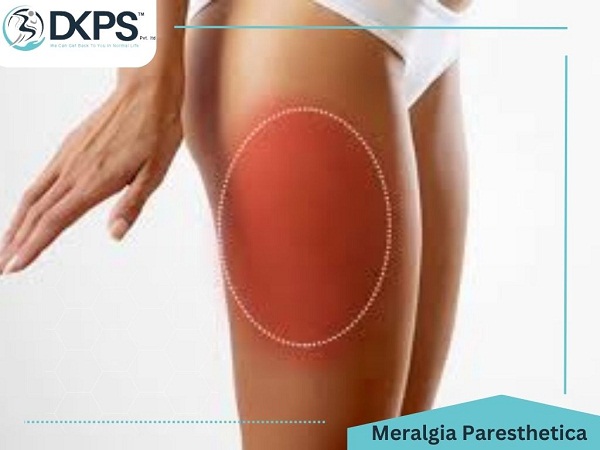- Home
- About Us
- DKPS Dealing
- BLOG
- Delhi NCR
- Delhi
- Physiotherapy at Home Near Me | Physiotherapist in South Delhi
- Best Chiropractor in Delhi
- Physiotherapist in Delhi
- Cupping Therapy in Delhi
- Home Nursing Services in Delhi
- Needle Therapy for Back Pain
- Sports Injury Physiotherapy
- Best Physiotherapist Visit at Home in Rohini Sector 24
- Physiotherapy at Home In Rohini Sector 9 |
- Physiotherapist in Pitampura | Physiotherapy at Home in Pitampura
- Physiotherapy at home in Rohini sector 29
- Physiotherapist in Paschim Vihar
- Physio home visit | Home Visit Physiotherapy |
- Physiotherapist in Saket | Best Physiotherapist in Saket |
- Physiotherapist In Janakpuri | Best Physiotherapist in Janakpuri |
- Best Physiotherapist in Punjabi Bagh | Punjabi Bagh Physiotherapist |
- Best Physiotherapist Service at Home in Dwarka, Delhi
- Best Physiotherapist in Chandigarh at Home Visit
- Faridabad
- Gurugram
- Noida
- Best Physiotherapy Gorakhpur
- Best Physiotherapist in Lucknow | Physiotherapist in Lucknow near me |
- Delhi
- Mumbai
- Delhi NCR
- Department
- Doctors
- Gallery
- Packages
- Contact Us
- Home
- About Us
- DKPS Dealing
- BLOG
- Delhi NCR
- Delhi
- Physiotherapy at Home Near Me | Physiotherapist in South Delhi
- Best Chiropractor in Delhi
- Physiotherapist in Delhi
- Cupping Therapy in Delhi
- Home Nursing Services in Delhi
- Needle Therapy for Back Pain
- Sports Injury Physiotherapy
- Best Physiotherapist Visit at Home in Rohini Sector 24
- Physiotherapy at Home In Rohini Sector 9 |
- Physiotherapist in Pitampura | Physiotherapy at Home in Pitampura
- Physiotherapy at home in Rohini sector 29
- Physiotherapist in Paschim Vihar
- Physio home visit | Home Visit Physiotherapy |
- Physiotherapist in Saket | Best Physiotherapist in Saket |
- Physiotherapist In Janakpuri | Best Physiotherapist in Janakpuri |
- Best Physiotherapist in Punjabi Bagh | Punjabi Bagh Physiotherapist |
- Best Physiotherapist Service at Home in Dwarka, Delhi
- Best Physiotherapist in Chandigarh at Home Visit
- Faridabad
- Gurugram
- Noida
- Best Physiotherapy Gorakhpur
- Best Physiotherapist in Lucknow | Physiotherapist in Lucknow near me |
- Delhi
- Mumbai
- Delhi NCR
- Department
- Doctors
- Gallery
- Packages
- Contact Us
Meralgia Paresthetica
- Home
- Meralgia Paresthetica

Meralgia Paresthetica-
Meralgia paresthetica: Understanding the Causes, Symptoms, Diagnosis, and Treatment of This Nerve Condition
Meralgia paresthetica is a nerve condition that affects the lateral femoral cutaneous nerve, a sensory nerve that supplies the outer portion of the thigh. The condition is characterized by pain, tingling, numbness, or burning sensations in the outer thigh, and it is often caused by compression or irritation of the nerve as it passes through the inguinal ligament, a band of tissue that runs across the groin area. In this comprehensive article, we will delve into the causes, symptoms, diagnosis, and treatment options for meralgia paresthetica.
Causes of Meralgia Paresthetica:
Meralgia paresthetica can be caused by various factors, including:
Compression of the nerve: The most common cause of meralgia paresthetica is compression of the lateral femoral cutaneous nerve as it passes through the inguinal ligament. This compression can occur due to tight clothing, belts, or other external pressure on the hip or waist, which can result in irritation and damage to the nerve.
Obesity: Excess body weight, especially around the waist and hip area, can increase the risk of meralgia paresthetica. The increased pressure on the inguinal ligament from excess fat can compress the nerve and lead to symptoms.
Pregnancy: During pregnancy, the growing uterus can put pressure on the inguinal ligament, leading to compression of the lateral femoral cutaneous nerve and subsequent meralgia paresthetica.
Diabetes: People with diabetes may be at an increased risk of developing meralgia paresthetica due to nerve damage (neuropathy) associated with the condition. Diabetic neuropathy can affect the nerves in various parts of the body, including the lateral femoral cutaneous nerve.
Trauma or injury: Direct trauma or injury to the hip or thigh, such as from a fall or accident, can result in compression or damage to the lateral femoral cutaneous nerve, leading to meralgia paresthetica.
Symptoms of Meralgia Paresthetica:
The most common symptom of meralgia paresthetica is a sensory disturbance in the outer thigh, which may include:
Pain: Sharp, burning, or shooting pain in the outer thigh is a hallmark symptom of meralgia paresthetica. The pain may be mild to severe in intensity and may worsen with movement or pressure on the affected area.
Tingling and numbness: Many people with meralgia paresthetica may experience tingling or numbness in the outer thigh. This may be described as a “pins-and-needles” sensation or loss of sensation in the affected area.
Sensitivity to touch: The skin over the outer thigh may become hypersensitive or painful to touch in meralgia paresthetica. Even light touch or pressure on the skin may trigger discomfort or pain.
Weakness: In some cases, weakness in the outer thigh muscles may occur due to nerve compression in meralgia paresthetica. This can affect mobility and may be accompanied by difficulty in walking or performing normal activities.
Diagnosis of Meralgia Paresthetica:
Diagnosing meralgia paresthetica typically involves a thorough medical history, and physical examination, and may include additional tests to rule out other conditions. A healthcare professional, such as a neurologist or orthopedic specialist, may perform the following:
Medical history and physical examination: The healthcare professional will review the patient’s medical history and ask about the symptoms, including the location, duration, and severity of the pain, tingling, or numbness in the outer thigh. A physical examination may be conducted to assess the affected area, including testing for sensitivity to touch, muscle strength, and reflexes.
Nerve conduction studies (NCS): NCS is a test that measures the electrical activity of nerves and can help identify any nerve damage or compression. In meralgia paresthetica, NCS may show abnormal findings in the lateral femoral cutaneous nerve, indicating nerve compression or irritation.
Imaging tests: Imaging tests, such as X-rays, MRI (magnetic resonance imaging), or CT (computed tomography) scans, may be ordered to rule out other possible causes of the symptoms, such as hip joint problems or structural abnormalities in the spine.
Differential diagnosis: Meralgia paresthetica may have similar symptoms to other conditions, such as herniated disc, hip bursitis, or lumbar radiculopathy. The healthcare professional will consider these conditions and may perform additional tests to rule them out before confirming the diagnosis of meralgia paresthetica.
Treatment of Meralgia Paresthetica:
The treatment approach for meralgia paresthetica depends on the severity of symptoms, underlying causes, and the individual’s overall health. Conservative treatment options are usually considered the first line of management and may include:
Lifestyle modifications: Avoiding tight clothing, belts, or other external pressure on the hip or waist can help relieve nerve compression and reduce symptoms. Losing weight if obese and avoiding prolonged standing or sitting in one position may also be recommended.
Medications: Over-the-counter pain medications, such as acetaminophen or nonsteroidal anti-inflammatory drugs (NSAIDs), may be prescribed to help alleviate pain and inflammation. In some cases, nerve-pain medications, such as gabapentin or pregabalin, may be prescribed to relieve the symptoms of tingling, numbness, or burning sensations.
Physical therapy: Physical therapy may be recommended to improve muscle strength, flexibility, and posture, and to reduce pressure on the lateral femoral cutaneous nerve. Stretching exercises, nerve gliding exercises, and other therapeutic modalities may be included in the physical therapy treatment plan.
Injection therapy: Corticosteroid injections may be administered directly into the inguinal ligament to reduce inflammation and relieve symptoms in cases where conservative measures are not effective.
Nerve decompression surgery: In rare cases where conservative measures do not provide relief, surgical decompression of the lateral femoral cutaneous nerve may be considered. During the surgery, the inguinal ligament is released to relieve pressure on the nerve.
Management of underlying conditions: If meralgia paresthetica is caused by an underlying condition such as diabetes or obesity, managing and treating the underlying condition may be an important part of the overall treatment plan.
It is important to note that treatment plans may vary depending on the individual case, and a healthcare professional will determine the most appropriate treatment approach based on the specific circumstances of each patient.
How Drsinghphysiocare Can Help You:-
Drsinghphysiocare.com https://drsinghphysiocare.com/has very experienced physiotherapists well-versed in modern manual techniques and rehabilitation protocols. Moving patients from one place to another is complicated and can even increase the damage. Drsinghphysiocare.com offers physiotherapists home visits to rehabilitate patients in the comfort of their homes. Regular home physiotherapy by our physiotherapist helps patients actively and vigorously return to independence.
Senior physicians select our talented and experienced physiotherapists after they meet our strict recruitment standards. As a result of our higher standards and quality of service, many patients have recovered from the comfort of their homes and saved their valuable time and money.
Additional Links
For More Articles
DKPS Physiotherapy services at Home
Contact Us
-
Rohini Sector 25 Pocket
1 Plot no 136
